[The story of India’s two thousand years old association with the Southeast Asian region remains a unique and unparalleled saga in the history of civilisations. It is a fascinating story that continues to retain its vibrancy and appeal. Indian culture found ready acceptance in this region, penetrated it peacefully and percolated deep into the region’s collective life and manifested itself through its various forms of expressions. That civilisational tie remains alive and vibrant even today. Can it be revisited, reassessed and reinvented for the present times, furthering a new vision of partnership between India and this region? The paper, looking at some of these past shared cultural linkages, calls for such an initiative.]
Years ago [1965] the legendary Khmer Monarch, Norodom Sinhanouk, while inaugurating a principal thoroughfare – Maha Vithei Jawaharlal Nehru Boulevard in Phnom Penh – in memory of the late Indian Prime Minister made a poignant observation which offered a significant insight into the international spirit of the ancient Indians and the great outreach of their rich civilisation. Expressing the intense sharing of culture that his ancestors had with the ancient Hindus1, the venerable monarch said, ‘When we refer to 2000 years old ties which unites us with India, it is not all a hyperbole. In fact, it was about 2000 years ago that the first navigators, Indian merchants and Brahmans brought to our ancestors their gods, their techniques, their organisation. Briefly India was for us what Greece was for the Latin Occident.’ 2. In other words it was from India that the ancient world cultures sought the enriching and nourishing light. Referring to just such an international outlook and contributions of the ancient Indians, a modern Indian internationalist as well as nationalist, Professor Benoy Kumar Sarkar (1887-1949) talked of the Indian’s ‘world-sense’.3 Indicating how au courant ancient Hindus were with world-thought and culture, Sarkar argued against the charge of isolationism that was often leveled against them. ‘The Hindus of the fourth, fifth and sixth centuries’, he wrote, were not living in “splendid isolation,” as it has been the fashion to suppose that the Asiatics have ever done. As in previous ages, so under the Guptas [c.320 CE- 600 CE] they kept up cultivating the “world-sense.”’4 Describing the internationalism of the Hindus as ‘extra-India’ Sarkar drove home the point that ancient Hindus did not merely develop a self-centric civilisation solely preoccupied with and active within the constricting limits of its physical boundaries but had evolved an acute and conscious ‘Asia-sense’, in that they were able to think ‘not only in terms of India but of entire Asia.’5 Citing India’s cultural and commercial reach in the area of which King Sihanouk and his state later formed an intrinsic part, Sarkar paid a tribute to Indian cultural pioneers who frequented that region as ‘embodiments of [that] world-sense.’ For him, ‘Hindusthân had never been shunted off from the main-track of universal culture’ and remained a vibrant land where the currents ‘of world-life regularly flowed’6 radiating, exchanging and assimilating world-ideas and cultures.
In fact one of the remarkable characteristics of the old-world, so to say, was that it exuded a greater international outlook in the actual sense of an assimilative co-existence. It can be said that some of the defining expressions of early Asian history were its ‘receptivity to cultural ideas regardless of their nationality, and a lack of religious bigotry. Prejudice against a foreign belief was uncommon; it certainly was never strong enough to cause total rejection of a different faith.’7 The belief that there were numerous approaches to truth broadly permeated international dealings and knowledge from various sources ‘alien or otherwise’ found ready acceptance if it was thought worthwhile. This ‘free flow of ideas, unimpeded by preconceptions and national barriers’ in a sense made the ancient world ‘in some ways far more international in its cultural outlook and social behaviour than our present day society.’ 8 India’s civilisational and cultural interlude in Southeast Asia was the expression of just such an international cultural outlook and social behaviour. In his monumental ‘Les États Hindouisés d’Indochine et d’Indonésie’ Georges Coedès refers to this phenomenon as ‘one of the outstanding events in the history of the world, one which has determined the destiny of a good portion of mankind.’9 The interaction between the Hindu culture and pre-Hindu populations in this region remains a unique example of a true interaction, exchange and concert of cultures. It is an experience that is perhaps worth revisiting in the present times through a dynamic and imaginative initiative by our policymakers.
That there existed well developed populations in these lands, who were, as the doyen of South Indian history K.A.Nilakanta Sastri (1892-1975) points out, ‘by no means utter savages and strangers to civilisation’ and who had ‘a well established cultural tradition of their own and lived in more or less organised societies with which the new comers [Hindus] had to make their terms’10 is well proved and accepted. Evidences, archeological and scriptural, amply point towards this fact. And yet there developed no situation of confrontation when the ancient Hindus came face to face with such a population. No evidences of violence, coercion and domination have emerged. In the entire process, as the British administrator, orientalist and Malaya expert R.O. Winstedt (1878-1966) was to point out, ‘there was no evidence that the arrival of Hindus in the Malay world [in the entire region for that matter] was sudden, or violent or overwhelming.’11 Sastri terms this process ‘pacific penetration.’12Art historian Philip Rawson in his ‘The Art of Southeast Asia’ says much the same thing when he writes that ‘no conquest or invasion, no forced conversion’ was ever initiated by the incoming Indian cultural and commercial forces. The ideas they brought along were adopted because ‘people saw that they were good and that they could use them.13 In his series on ‘The Renaissance in India’ written between 1918 and 1921, scholar-philosopher Sri Aurobindo, supporting such a perception saw India’s penetration of the archipelago as an ‘invasion of peace and not of war’ and as an expansion of culture.14 The ‘spread of a spiritual civilisation by force and physical conquest, the vaunt or excuse of modern imperialism’, he perceives, as being uncongenial to the ancient Hindu mind and to the ‘idea underlying her Dharma.’15 Yet it was a conquest alright, but a conquest that facilitated the penetration – without friction – into the Eastern world of Indian ‘spirituality, art and thought-forces.’ The difference with other such expeditions was this, that the ships that set out from Indian shores were not ‘fleets of invaders missioned to annex those outlying countries to an Indian empire’ but of adventurers, traders and intellectuals ‘carrying with them Indian religion, architecture, art, poetry, thought, life, manners.’16 Proactive dissemination of ‘soft-power’, especially in this region – and I am not even referring to Central Asia in the present discussion – was something that perhaps came naturally to the ancient Indians whatever may be our perception and reading of that crucial instrument of international dealing today.
There was a basic difference in the Indian approach to the permeation of culture in the region of the Southeast Asian archipelago and it was perhaps the reason for its non-resisted acceptance by the indigenous populations. The Indians did not treat these new lands as ‘outlets for their excessive population or an exclusive market for their growing trade, [nor did] they [insist] on the superiority of their culture.’ Instead wherever they settled in the region they ‘gave what they had and took what they could’ and thus through ‘mutual consent’ evolved a culture with a dominant Indian note.17 Unlike the Chinese who throughout history attempted to dominate and impose their civilisation in the region around, and even today display an attitude of treating these areas in some cases as outlets for their excessive population and in others as an exclusive market for their growing trade, the Indians historically, as historian and archeologist B.P.Groselier (1887-1945) lyrically argued – especially describing the Chinese and Indian activities in the Indo-China region – touched the region for a short period of time, drew out the peoples from their isolation and inspired them to ‘take over her culture’ and then create ‘new civilisations of profound originality. China dominated, whilst India scattered seed.’18 Alluding to such a responsible international behaviour on India’s part, Kalidas Nag (1891-1966), philosopher-historian and one of the early Indian explorers of India’s sharing of culture with Southeast Asia, made a profound observation when he wrote that ‘Each time India transcended her national boundaries, she had developed a civilisation as permanently national in the best sense, as international in its beneficial operation’ [sic].19To borrow thus, Arnold Toynbee’s expressive term, ancient Hindus and their civilisation did not suffer from an ‘egocentric illusion’ manifested in an extreme sense of self-superiority20 that many other civilisations have displayed in the past and continue to do so today. Wherever they moved, along with their cultural repositories, the ancient Hindus proved beneficial for those with whom they mingled. The process was one of a true exchange and not merely a unilateral imposition from a dominant culture. In his talk on the ‘Spirit of Indian Culture’ delivered at Surabaya, Indonesia during an extensive tour of Southeast Asia, Swami Ranganathananda (1908-2005), indicated that this true intermingling and mutual enrichment could take place because of the ‘spiritual character’ of Indian culture which while furnishing India with a ‘resilience to withstand external shocks’ also allowed it to develop ‘an amazing assimilative power by which her culture became enriched, through contacts with other cultures’ and vice versa.21 It was this assimilative power that enabled a two-way traffic to occur.
Empirical evidences of this intermingling of cultures abound throughout the region and can be witnessed to this day through its architecture, art, customs, ceremonies and performing arts, all of which reflect a distinct Hindu-Buddhist stamp along with a blend of local colours, temperaments and manners. Much has been written over the years on the issue, nevertheless a brief survey of some of the extant manifestations of this co-mingling would perhaps be in order here. I seek to begin with the example of an early Indian internationalist whose 150th birth anniversary is being presently observed. Rabindranath Tagore and his selected team of Visva-Bharati academics, comprising of historians, linguists and artists were one of the early Indian pioneers seeking to explore this intermingling and to renew the cultural link between India and Southeast Asia. Much is always made of Tagore’s visit to China (1924), it is that which survives in the collective memory, relegating to the shadows, his culturally more successful visit to Southeast Asia. In fact, while in China, Tagore had turned into ‘The Controversial Guest’ and had actually evoked intense hostility from radical students groups and ‘ultra-left oriented political leaders.’22 His Southeast Asian tour in 1927, on the other hand, evoked warm response in the region. Tagore’s objective in undertaking the tour was twofold, to study the ‘remains of Indian civilisation in the antiquarian relics as well as the life and the living arts in Indonesia and Farther India [and secondly] to bring about a close cultural cooperation between India and these regions…’23 At a send off given to him by ‘eminent Calcuttan scholars’ the poet said his chief motive behind the tour ‘was a desire to discover Indian culture in India’s Southeast Asian Frontier area’, he said he was setting off on a pilgrimage to ‘India beyond its modern political boundaries’ and was eager to discover the ‘Asian Cultural identity.’24 During its travels through the region the delegation continuously witnessed expressions of Indianisation, ‘Along every village road,’ the poet wrote later of his Bali sojourn, ‘processions of men and women were arriving with multifarious offerings. Some puranic age seemed to have come back to life before our very eyes, some picture from the Ajanta caves come out from the realm of art into the realm of life to revel in the sunshine.25During a guided tour as a guest of one of the local Rajas of the Bali region Sanskrit emerged as the only language making communication possible between the poet and his royal host. Linguist, litterateur and educationist Suniti Kumar Chatterji (1890-1977), who was part of the delegation and maintained meticulous records of the visit describes this amusing yet profound encounter. The silence between the Raja and the poet melted, records Chatterji, when the former seeing a patch of blue sea, exclaimed in Sanskrit ‘samudra’ and seeing that it was pleasing and surprising his eminent guest, went on to utter other Sanskrit words for the sea: ‘sagar, abdhi, jaladhya.’ He then went on to recite the names of the sacred Indian rivers: ‘Ganga, Jamuna, Narmada, Godavari, Kaveri, and Saraswati’ – the sacred Indian geography seemed to be ‘imprinted on the Balinese mind.’ The ancient bond with India was sought to be revived through the medium of Sanskrit26 and it was this bond that the poet had set out to really rediscover. Tagore had already been to China by then, but ‘Indonesia held a special attraction for him [and] he took upon himself the task of restoring the lost cultural ties with India.’27In the area Tagore was looked upon as a ‘Mahaguru’ reminding the locals of the ancient Hindu Sage Agastya – popularly known among them as Bharata Guru. 28
Preceding the poet in this land was a hardened French explorer, who also attested to the deep and resilient percolation of Hindu culture and religion among the local population of the region. He was witness to an unexpected expression of that mingling. Jules Leclercq (1848-1928), involved in the 1880s in the second phase excavation of the ninth century Hindu temple of Prambanan in Central Java dedicated to the Hindu Trimurti, records a quite unexpected (assez inattendu. sic) scene. After vegetation around the temple complex was cleared and the statues and sanctorum were visible, records Leclercq, ‘…les indigènes, quoique convertis depuis trois siècles à l’islamisme, viennent journellement visiter les temples rendus à leur pieté, et l’on voit mème des hadjis offrir des fleurs et de l’encens aux dieux de leurs ancêtres: j’ai vu une femme se prosterner aux pieds d’un des dieux et lui vouer son enfant. L’islamisme imposé aux Javanais par le sabre n’a jamais complètement déraciné de leurs coeurs leurs anciennes croyances, et ils y reviendraient sans aucune difficulté.’[…the indigenous people though converted to Islam for the last three centuries began visiting the temples daily to offer their homage, and one saw even hajjis frequenting the place with offerings of flowers and incense to propitiate the gods of their ancestors. I have also seen a woman prostrate herself before the statue of one of the gods and dedicate her child to him. Islam imposed on the Javanese by force of the sabre could never completely deracinate from their hearts their ancient beliefs and they could come back to them, relive them, without any difficulty.]29
In his study of ‘Sanskrit in South-East Asia’ R.C.Majumdar (1888-1980) made a detailed survey from scriptural evidences of the extensive usage of Sanskrit in the region. He elaborated ‘positive evidences’ which revealed that there was ‘a very high degree of Sanskrit scholarship all over this vast region consisting, mainly, of Malay Peninsula, Siam or Thailand, Kambuja or Cambodia, Laos and Campā (Vietnam) in Indo-China, and the various islands of the Indian Archipelago, also called East Indies and Indonesia, especially Sumatra, Java, Bali and Borneo.’30Detailing the Sanskrit inscriptions of a celebrated Hindu king of Kambuja, Majumdar draws attention to the fact that the inscriptions make frequent references to ‘kings, officials and other individuals as highly proficient in different branches in literature’ such as the four Vedas – specifically Rg, Yaju, Sāma and Atharvaveda…six Vedāngas, six systems of philosophy…Dharmaśāstras, Arthaśāstra, Dhanurveda, Gandharvaveda (Music) etc.31 The fusion between the Indian settlers and gradually Hinduised locals, according to Majumdar was ‘so complete that it [was] not always possible to distinguish between the two. The latter assumed Hindu names and adopted Sanskrit or Pali language and Hindu religion, manners and customs’ while the former adopting local habits, social usages ‘ merged themselves into the local communities'.32 According to Coedès this process had a twin characteristic, each of these local states ‘through reaction with the indigenous substratum’ developed ‘according to its own genius’ and yet their cultures never lost the ‘family resemblance that they owed to their common origin.’33 The discovery, the tracking and study thus, of the Hindu civilisational reach in these areas and their existing and continuing - albeit re-shaped and restructured – physical expressions seemed to have fascinated some of the distinguished early Indian and Western scholars. In his inaugural lecture on Kambujadeśa a delivered at the University of Madras in 1943 at the invitation of Nilakanta Sastri, Majumdar plainly stated this essential quest when he said that he shall, through his lectures, try to trace how ‘the essential spirit of Hindu culture was transplanted to this distant corner of Asia, how the Hindu religion inspired it [the mighty kingdom of Kambuja] to build monuments whose massive grandeur still excites the wonder of the world and far surpasses anything known so far in India, how art and institutions, created on Indian models, grew and developed a unique character, [and] how this mighty colonial kingdom flourished for more than a thousand years fed by constant streams of civilisation flowing from the motherland…’34
Evidences of the expressions of Buddhist art, architecture, religion and customs are also massively visible in the area under discussion. Buddhism and Hinduism had a shared destiny in the region. Both, it is believed, helped in their own way the ‘cultural intercourse’ until the whole of Southeast Asia professed at various times a mix of Hinduism – Buddhism – and various indigenous beliefs.35There appears to have been no antagonism between the two, in some lands of the region ‘Hinduism was so intermingled with Buddhism that ‘Siva and Buddha were described as brothers.’36 Buddhism here, took control of kingdoms, influenced currents of thoughts and action and inspired its adherents to leave behind massive legacies and imprints. Even in these grand artistic and architectural expressions, the external and the local were blended. The Indian origins of Buddhist architecture in this region is clearly visible as is its merging with the local genre. In his rather interestingly named work ‘The Art of Indian Asia’ Heinrich Zimmer (1890-1943) describes these very syncretic architectural expressions of Buddhism – especially referring to the architectures of the eighth century Buddhist Sailendra dynasty of Java – as ‘intrinsically Indian’ though guided in the ‘new, very gifted environment by a new inspiration.’37It is also widely accepted that it was mainly through the instrumentality of Buddhism that ‘Indian thought and culture made an impression on Burmese life and civilisation.’38
A short aside on the Indian epics and their nationalization by the Southeast Asian civilisations would be relevant here, even though the issue has been amply discussed and highlighted in the past. It demonstrates a certain Indian cultural permanence in the area. The Indian national epics – Ramayana, Mahabharata – in a sense symbolize the soul of Hindu culture. ‘The whole ancient culture of India’ is seen as embodied in these ‘with a great force of intellectual conception and living presentation’ and ‘became and remained one of the chief instruments of popular education and culture, [moulding] the thought, character, aesthetic and religious mind of the people…’39 Its implantation, acceptance and internalization, therefore, among the Southeast Asian nations reflected the deeper link and mutuality between the two regions. The Epics and their influences in this region percolated deep and similarly moulded its cultural and religious life. In leaving behind their epics the ancient Indians really left behind their essential cultural and civilisational trait and identity, an identity that would outlive the ravages of time and conquering faiths and continue to remain one of the links that could renew – at a short notice – the bonds of a shared past. With local adaptation and variations to suit the local temperament, emotion and thinking the Indian epics have over the centuries been totally indigenized and continue to survive in the popular national life of countries of the region. Dutch Sanskritist and Indophile Jean Philippe Vogel (1872-1958) saw the ‘Rama tradition’ as a still ‘living force’ in the region. Talking of the Javanese adaptation of the Indian epics, Vogel observed that the epics have been so completely assimilated that ‘for the great mass of the population, Rama and the Pandavas are truly national heroes, born and bred in the Isle of Java.’40 It is strange that in the country of their origin these heroes are still looked upon with skepticism and disbelief by a certain articulate section! Local traditions and art forms having blended with the lore, their depictions have continued to make these Indian stories find ‘extreme favour’ among ‘all classes of society. Vogel refers to the use of the Wayang, – shadow show [puppet] in the narration and says that ‘Indians familiar with their Mahabharata and Ramayana would be surprised to see Arjuna, Krishna and Rama appear here in the quaint garb of Wayang puppets, which, in their strangely fantastical, yet unmistakably artistic character, are the true children of Indonesian art.’ It was such a compelling fascination that Rama-I (1736 (37?) – 1809), the legendary Thai Buddhist king found time – amidst his many wars and conquests – to retell the Ramayana and make its version a ‘master piece of Thai literature’ that is even now cherished and kept alive in the Thai national mind.41
India’s presence in the region had certain distinctively positive traits compared to the other large and powerful civilisation of the area. It will perhaps be a useful exercise to briefly compare certain dominant behavioural traits of the two cultures in this region. There was one stark point of difference between the two and Sastri states it starkly. Talking of the Chinese, he observes that they always ‘remained colonies of foreigners with little inclination to mix with the local populations, and in contrast to what the Hindus achieved, there is nowhere any trace of the taking over of Chinese culture by the children of the soil.’42The Indian impact was seen as a kind of ‘chain reaction, in which each successive wave of Indian immigrants worked out a cultural synthesis with the local people…with varying degrees of concentration and assimilation.’ 43 Chinese cultural expansion in the area was almost always the ‘secondary outcome of political domination, for China seldom exported culture for its own sake but gave it as if to soften the blow of conquest.’44The Indian approach, on the other hand, has consistently been one of unconditional export of culture. Coedès discussing the Chinese factor in the region made an observation that perhaps retains a strikingly contemporary ring and may remain a key factor to be taken into account by any Indian policy formulation for this region today and indeed during the last six decades or so. Pointing at the Chinese attitude towards its peripheral states and their cultures Coedès argues that the Chinese ‘never looked with favour on formation of strong states in the southern seas, and [that] it is a fact worth noting that the periods of the greatest strength of Funan [a pre-Angkor Indianised kingdom in the Mekong delta said to have been established around the 1st century C.E.], Cambodia, and the Javanese and Sumatran kingdoms correspond in general to the periods of weakness of great Chinese dynasties.’45In his Le Viet Nam en marche [Hanoi 1955] Vietnamese communist writer Nguyen Van Dam vividly described the result of a long Chinese occupation of his country [from about 111 BCE onwards] and the colonized existence of his people. ‘When it was hardly formed’, wrote Van Dam, ‘ the Vietnamese people came under the feudal Chinese yoke for ten centuries…It was a grim regime of colonization, characterised by oppression and inhuman exploitation. The people were bled white; they were obliged to supply pearls and precious stones, elephants’ tusks and rare woods, for the Chinese pro-consuls … [The Minh period during the 15th century witnessed harsher treatment] Chinese customs were imposed by force, the women were forced to dress themselves, and do their hair, in the Chinese way. All our national treasures, historical, literary, and scientific were seized and carried away to China…The best Vietnamese books were officially burnt and replaced by Chinese classics…’46 The Indian approach was to allow the growth and flowering of various kingdoms and cultures with the – as noted above – dominant note being Indian. There is no evidence that the Indian immigrant sought to dominate or weaken the local cultures and administrations. There is no evidence that the Indian immigrants made any conscious effort ‘to convert local peoples to their faith or culture, they certainly did not impose it by force.’47 India’s civilisational performance in Southeast Asia in ancient times remains a remarkable episode in the history of the growth of world civilisations – ancient Indians were able to ‘radically transform whole civilisations by spontaneous individual effort, without state aid, planned organizational backing, or political domination.’48 It reflected the essential prowess of the Indian psyche and temperament and also its essential spirit of adventurism as well as internationalism.
All that has been stated above is simply a revisiting of past findings and conclusions relating to the Indian experience in that area, though in our present active dealing with the region our current policies – especially when it comes to the field of culture and its effective use in furthering relations and our long term aspirations – seem to largely ignore this cardinal historical truth. Culturally, historically and from the civilisational point of view India ought to have shown more concern and involvement in the region. Leaving aside diplomatic turbulences of the sixties, past misunderstandings and acrimonies between India and certain nations of the region, what should have defined Indian effort in the area – apart from dynamic trade initiatives, efforts at infrastructural linkages etc. – is an imaginative and proactive cultural initiative and outreach. If cultural diplomacy is indeed the exchange and sharing of ideas, art, lifestyles, values, information, then this exchange – vigorously evident in the past – has today been limited to mere academic effort and interest. That culture can be a serious instrument for reaching out – especially to areas which retain even to this day Indian cultural residues – has been repeatedly negated or overlooked. Merely setting up bodies for furthering cultural relations and hosting staid state functions under its aegis and within the confines and control of officialdom has not served the purpose of or furthered the Indian effort at cultural diplomacy. The vision if any, in this area, does not seem to have been adequately articulated or acted upon in the last six decades, at least since 1949 when the first cultural body was formed, supposedly with the vision of renewing and reinventing India’s historical cultural linkages worldwide. In his essay on ‘Indian Policy in South-east Asia’ historian of world civilisations and Southeast Asia expert, D.P.Singhal observes that ‘given the geographical, historical and economic links, it is not unlikely that India could have laid the foundation of an Asian Commonwealth of nations. Instead, [she] felt the need to retain her membership of the British Commonwealth. While emotion joined her with Asia, habit drew her to Europe.’49 An attitude of non-involvement in Asia pervaded Indian policymaking, especially in the cultural front and ‘even when friendly advice or a firm gesture would have been helpful, India did not give it.’50 In fact India always restrained from ‘emphasising the Indian contribution to Asian culture.’51 For China, conversely, over the years, culture has increasingly become next to politics and economics, the third pillar of its diplomacy. China is said to be undertaking over 1,000 cultural exchanges annually and is seen to vigorously promote its culture worldwide.52 A case in point is the massive push it has given since 2004 to the setting up of language-training schools (Confucius Institutes) all over the globe. An important goal of these institutes, as officials admit, ‘is to give the world a “correct” understanding of China.’53 While promoting its language and culture China also appears to be actively scouting the region trying to rediscover and re-establish what it believes to be its legitimate cultural and historical linkages.
My principal objective in undertaking a tour d’horizon of India’s cultural sharing in the Southeast Asian region is to advocate an approach of greater cultural activism on the part of the present India. While it is hard to explain the lack of national initiative in this area, it is not difficult to see that we are progressively reducing our cultural maneuverability and ceding space in the region to a mindset that – in the long run – shall distrust and attempt to subjugate diversities of cultures and of living in its surrounding areas. While stating the unfinished Indian agenda in Southeast Asia, Singhal argues that ‘if India is to retain the initiative and prestige in South-east Asia, she must pursue a policy, animated by Asianness and neighbourliness. She should seek Asian help in her own national predicament against Asian pressure…India must re-enact the feeling of oneness’54through a major and incisive multidimensional effort. And one of the sustaining pillars of this effort has to be a ‘comprehensive, regular and lasting programme of cultural exchange with Southeast Asia.’ 55 A mere cosmetic approach imbued with a dilettante spirit will not serve to counter a far more determined and now decisive cultural force that is seeking with great rapidity to gain control of the region’s mind and thinking.
If it is accepted that in the present state of world affairs ‘the most important distinctions among peoples are not ideological, political or economic [but] cultural’56 then perhaps efforts at resuming cultural linkages and forming cultural coalitions can assume a new geopolitical, historical and civilisational significance – at least for India and this region with which she has been umbilically connected. Such an effort on our part would be a true reigniting and reinstating of the international spirit that the ancient Hindus so formidably excelled in!
The above paper is based on a presentation made at the National Seminar on ‘Cultural Identity and Nationalism’ held at the Jadavpur University, Kolkata on 21-22nd March, 2011.
Endnotes :
- I have used the terms 'ancient Indians' and 'ancient Hindus' interchangeably to mean the same thing. Firstly because in the period under discussion the geographical contours of Bharatavarsha [India] was successively dominated by Hindu empires that aspired for political samrajya within that defining geographical landmass while also venturing out to create a cultural samrajya beyond that confine. Secondly, a section of those vibrant Indian thinkers, whom I have briefly alluded to, have themselves adopted such a method. For them, there appears to be no essential dichotomy between the term Indian and Hindu.
- Cited in D.P.Singhal, India and World Civilization, vol.2 (Michigan: Michigan State University Press, 1969), pp.131-132.
- Benoy Kumar Sarkar, The Beginning of Hindu Culture as World-Power (A.D. 300-600), (Shanghai: The Commercial Press Ltd, 1916), p.6.
- Ibid.
- Ibid.
- Ibid., p.8.
- D.P.Singhal, India and World Civilization, vol.1, (Michigan: Michigan State University Press, 1969), p.267.
- Ibid. It has to be kept in mind that such a free exchange and flow of culture and thought continued in full vigour until, as Singhal argues, the 'Christian suppression of non-Christian religions in the Roman Empire' began. (Singhal, ibid., p.267)
- Georges Coedès, The Indianised States of Southeast Asia, (ed. Walter.F.Vella, trans. Sue Brown Cowing), (Hawaii: East-West Centre Press, University of Hawaii, 1968), p.xvi.
- K.A.Nilakanta Sastri, History of Sri Vijaya, (Madras: University of Madras, 1949), p.5.
- Richard Winstedt, History of Malaya, (London: 1935).
- K.A.Nilakanta Sastri, South Indian Influences in the Far East (Hind Kitabs, 1949), (rpt. Chennai: Tamil Arts Academy, 2003), p.11.
- Philip Rawson, The Art of Southeast Asia ( 1990) cited in Troy Dean Harris, Notes on the Ancient Khmer Contribution to the Religious Culture, (Paris: Summer, 2010), pp.6-7.
- Sri Aurobindo, The Renaissance in India and Other Essays on Indian Culture, (Pondicherry: Sri Aurobindo Ashram Publication Dept, 2nd imp, 2002), pp. 426-427.
- Ibid., p.427.
- Ibid. There is of course this argument readily proffered that the Cholas under Raja Raja and Rajendra -I displayed hegemonistic tendencies and were far from peaceful intruders. While this is a historical fact, it appears to be the only one and that too to a temporary one. Such episodes only serve to prove the physical and strategic prowess of the ancient Hindus and to disprove theories which label them as solely preoccupied with 'heareafterism'. While Rajendra - I's inscriptions describe his naval expedition against Srivijaya there is another interesting inscription which shed some light on similar such expeditions and their actual nature. In 1068 a Chola king Virarajendra - I says that 'after having conquered Kadaram (one of the feudatory states under Shrivijaya), he had to restore it to the vanquished King, "as it was too far off beyond the moving sea."'[Bijan Raj Chatterji, India and Java, (Calcutta: Greater India Society Bulletin No.5, Prabasi Press, 1933), p.26]. It would thus perhaps be futile to try and find traces of a western styled imperialism and nationalism in these naval expeditions undertaken by Hindu monarchs. The fact that the conquered area appears to have been restored speaks volumes on the actual nature of the whole effort.
- Singhal, vol.2, op.cit., p.93.
- Bernard Phillippe Groselier, Indochina, (trans. George Lawrence), (London: 1962), p.41.
- Kalidas Nag, Greater India, (Greater India Society Bulletin No.1), (Calcutta: Greater India Society, 1926), p.25.
- D.P.Singhal, Nationalism in India and Other Historical Essays, (Delhi: Munshiram Manoharlal, 1967), p.159.
- Swami Ranganathananda, A Pilgrim Looks at the World, vol.1, (Delhi: Bharatiya Vidya Bhavan, 1974), p.165.
- Sisir Kumar Das, The Controversial Guest - Tagore in China, (New Delhi: Indira Gandhi Centre for the Arts & Gyan Publishing House, 1988), p.1.
- Arun Das Gupta, 'Rabindranath Tagore in Indonesia - an Experiment at Bridge Building' in Bidragen tot de Taal-, Land-en Volkenkunde (Journal of the Humanities and Social Sciences of Southeast Asia and Oceania). 158 (2002), no.3, Leiden, 451-477.), p.456.
- Ibid.
- Ibid., p.462
- Suniti Kumar Chatterji, Rabindra Sangame Dvipamay Bharat O Symadesh (with Tagore in Island India and Siam) (Calcutta: Prakash Bhavan, 1940, 1964), p. 308 cited in Dasgupta, op.cit., p. 462.
- Dasgupta, op.cit., p.458.
- Ibid., p. 462. According to Sastri, Sage Agastya was assigned an important role in the lore of Indo-China and Indonesia. '…this redoubtable seer' writes Sastri, 'plays an important part in the foundation of some at least of the Hindu kingdoms of the East. He acts as intermediary between divinity and royalty, by receiving the palladium of the state, a linga, from God ?iva and passing it on to the ruling king, the founder of the monarchy.' Agastya is a prominent figure in the iconography of Java and his 'connection with the foundation of the state was cherished in Camp? and Kambuja till very late in their history, till the tenth or eleventh century.' [Sastri, History of Sri Vijaya, op.cit., p.6]
- Jules Leclerq, Un Séjour dans L'Ile de Java, (Paris: E. Plon, Nourrit et Cie Imprimeurs-Éditeurs, Deuxième Éditions, 1898), p. 147. (Translation mine from the original).
- Ramesh Chandra Majumdar, Study of Sanskrit in South-East Asia, (Calcutta Sanskrit College Research Series No. CII), (Calcutta: Sanskrit College, 1974), p.7.
- Ibid., p.11.
- Ibid., p.8.
- Coedès, op.cit., p.xvii.
- Ramesh Chandra Majumdar, Kambuja Desa - or Ancient Hindu Colony in Cambodia, (Madras: University of Madras, 1944), p.1.
- Singhal , vol.2, op.cit. pp. 91-92.
- Ibid., p.92.
- Hienrich Zimmer, The Art of Indian Asia - its Mythology and Transformation (ed. Joseph Campbell, Princeton, 1955).
- Singhal, vol.2, op.cit., p.104.
- Sri Aurobindo, The Renaissance in India, op.cit., pp.345-46.
- J.P.Vogel, The Influences of Indian Art, cited in Bijan Raj Chatterji, op.cit., p. 36.
- Ramayana - Masterpiece of Thai Literature retold from the Original Version by King Rama - I of Siam, (Bangkok: Chalermnit Press, 2nd ed, 1967), p.1.
- Sastri, South Indian Influences, op. cit., pp.8-9.
- Singhal, vol.2, op.cit., p. 94.
- Ibid., p.97.
- Coedès, op.cit., p. xviii.
- Nguyen Van Dam, Le Viet Nam en marche, (Hanoi: 1955), cited in Swami Ranganathananda, op. cit., pp. 215-217.
- Singhal, vol.2, op.cit., p. 92.
- Ibid., p.88.
- D.P.Singhal, 'Indian Policy in South-east Asia' ( Australian Journal of Politics and History, vol.XII, No.2, 1966), rpt. in Nationalism in India and Other Historical Essays, op.cit., p. 297.
- Ibid., pp. 301-302.
- Ibid., p.302.
- LAI Hongyi, China's Cultural Diplomacy: Going for Soft Power, (EAI Background Brief No.308), (Singapore: East Asian Institute, October 2006), p,i.
- 'Rectification of Statues: China's Confucius Institutes', The Economist, January 20th, 2011.
- Singhal, Indian Policy in Southeast Asia, op. cit., p. 313.
- Ibid.
- Samuel. P. Huntington, The Clash of Civilisations and the Remaking of World Order, (Simon & Schuster, 1996), p.21.
--------------------------------------------------
Published date : 20 April, 2011

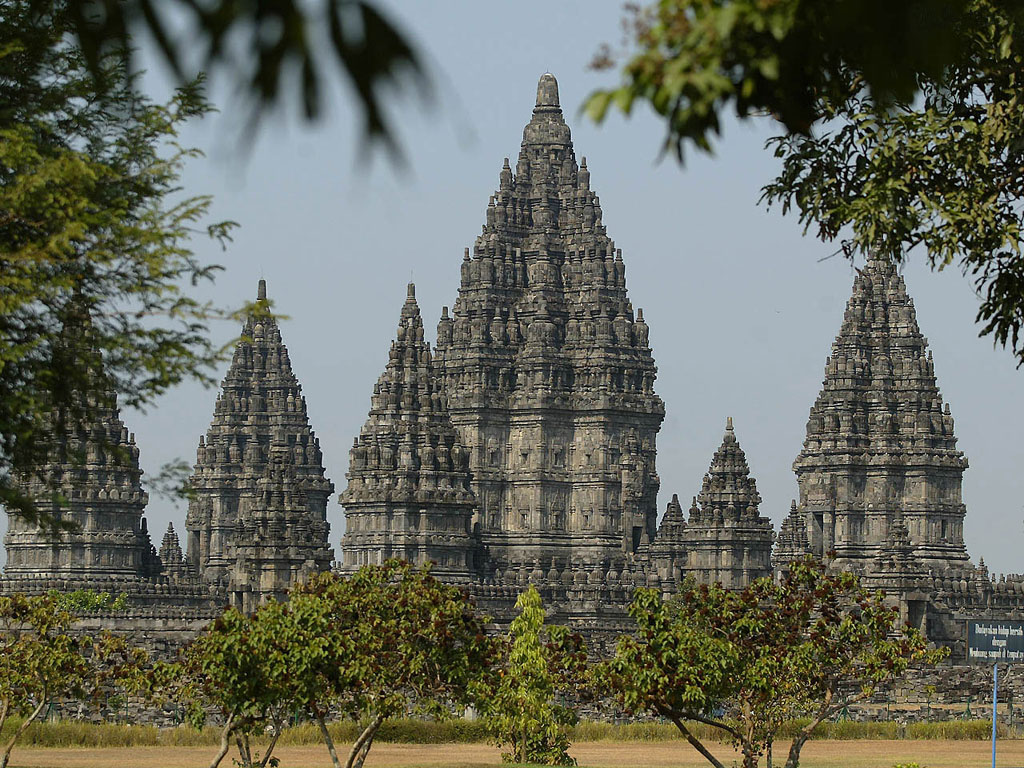

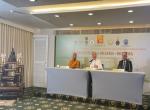
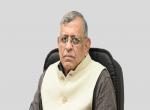
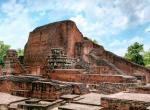


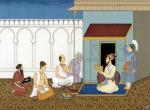

Post new comment